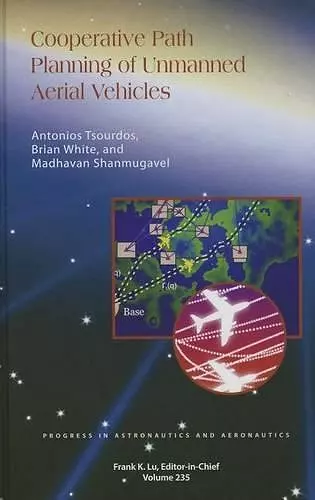Cooperative Path Planning of Unmanned Aerial Vehicles
Bruce White author Antonios Tsourdos author Madhavan Shanmugavel author
Format:Hardback
Publisher:American Institute of Aeronautics & Astronautics
Published:30th Dec '10
Currently unavailable, our supplier has not provided us a restock date

An invaluable addition to the literature on unmanned aerial vehicle (UAV) guidance and cooperative control, Cooperative Path Planning of Unmanned Aerial Vehicles is a dedicated, practical guide to computational path planning for UAVs. One of the key issues facing future development of UAVs is path planning: it is vital that swarm UAVs/MAVs can cooperate together in a coordinated manner, obeying a pre-planned course but able to react to their environment by communicating and cooperating. An optimized path is necessary in order to ensure that a UAV completes its mission efficiently, safely and successfully. Focussing on the path planning of multiple UAVs for simultaneous arrival on target, Cooperative Path Planning of Unmanned Aerial Vehicles also offers coverage of path planners that are applicable to land, sea or space-bourne vehicles. Cooperative Path Planning of Unmanned Aerial Vehicles is authored by leading researchers from Cranfield University and provides an authoritative resource for researchers, academics and engineers working in the area of cooperative systems, cooperative control and optimization particularly in the aerospace industry.* Includes chapters on path planning, 3-D path planning, cooperative path planning, path planning in complex environments as well as guidance for accurate path following and sense and avoid algorithms to deal with collision avoidance. * Approaches the solution to UAV path planning via two phases: producing paths to meet curvature constraints - the flyable paths, and then tuning the flyable paths to meet the mission demands. * Describes flyable path approaches using composite curves using Dubins and Clothoid principles, and continuous curves using Pythagorean Hodograph principles; and extends these approaches to cater for the complex problem of obstacle avoidance.
ISBN: 9781600867798
Dimensions: unknown
Weight: unknown
216 pages
2nd Revised edition